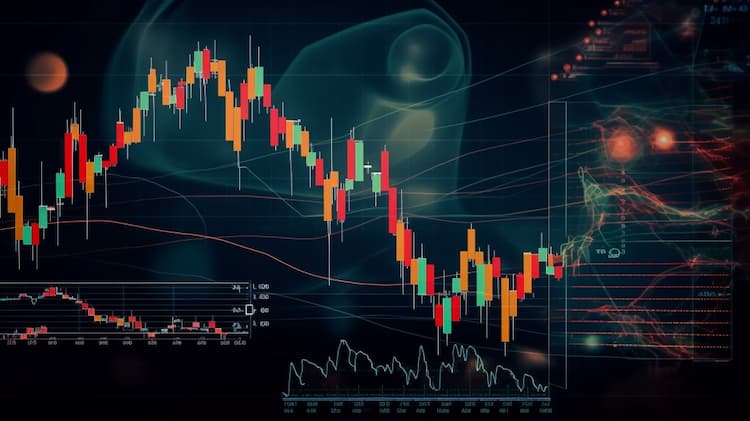SXUS ISSUER
The Sustainable Global Equity ETF (SXUS) is offered by a forward-thinking issuer committed to socially responsible investing. This ETF, managed by a team of experts, seeks to invest in companies that contribute to positive environmental and social change, as well as sustainable economic development. It focuses on global equity securities tied to countries outside the United States, including emerging markets, and employs an active management approach, selecting investments based on environmental and social themes, while also applying negative screens to avoid industries with a negative societal or environmental impact. The portfolio managers aim to maintain a carbon footprint at least 20% below the MSCI All Country World ex-USA IndexSM and actively engage with companies on various ESG matters, making SXUS a responsible investment choice for those seeking global exposure while aligning with sustainable values.
SXUS DIVIDEND
The SXUS Dividend ETF employs a passive management investment approach aimed at tracking the total return performance of the SXUS Index. This index follows a proprietary methodology developed by Index Design Group, an affiliate of Pacer Advisors, Inc., the ETF's investment adviser. The SXUS Index focuses on large and mid-capitalization companies in emerging markets with high free cash flow yields, commonly known as cash cows. To be eligible for inclusion in the SXUS Index, companies must meet certain criteria, including positive average projected free cash flows and earnings over the next two fiscal years. Companies with negative free cash flows or earnings are excluded. Financial companies (excluding REITs), those with a market capitalization below $2 billion, and those with an average daily trading value below $5 million are also excluded. The index ranks the remaining companies by their free cash flow yield over the trailing twelve-month period. The top 100 companies with the highest free cash flow yield make up the index, with individual weightings capped at 2% of the index's total weight. Additionally, there is a limit of twenty companies from any individual country or sector. The SXUS Index is reconstituted and rebalanced semi-annually, ensuring it remains representative of the selected companies. The SXUS Dividend ETF aims to invest at least 80% of its assets in the component securities of the SXUS Index or investments that closely mimic these securities' characteristics. The ETF typically uses a replication strategy but may employ a representative sampling strategy when deemed appropriate by the adviser. Up to 20% of the ETF's assets may be allocated to cash, cash equivalents, and other instruments not included in the index to enhance tracking. While the primary focus of the SXUS Dividend ETF is on tracking the index's total return performance, investors may indirectly benefit from dividend distributions based on the underlying companies' dividend policies and performances. However, it's essential to note that this ETF may not prioritize dividends as its primary investment objective.
SXUS TRACKING
Tracking the Sustainable Economic Development Index is at the core of the Alternative Sources SXUS ETF's strategy. The fund pursues its investment objective by investing at least 80% of its net assets in equity securities of companies that contribute to positive environmental or social change and sustainable economic development. It primarily focuses on companies economically tied to countries outside of the United States, including emerging markets. The ETF employs a bottom-up approach, considering environmental and social themes, while also applying negative screens to avoid companies engaged in activities detrimental to society or the environment. The portfolio managers actively engage with company management on various ESG matters, aiming to maintain a portfolio with a reduced carbon footprint compared to the MSCI All Country World ex-USA IndexSM.
SXUS CORRELATION
The correlation characteristics of the SXUS ETF are integral for investors seeking to comprehend its interactions with other market assets or indices. For those unfamiliar with the specific correlation nuances of SXUS, it's essential to recognize the importance of such metrics in the investment landscape. Utilizing the ETF Insider web app, individuals can explore the correlations of SXUS in depth, obtaining comprehensive and intriguing data for all U.S. ETFs. The platform's user-friendly visualization tool not only demystifies the data but also distinctly showcases the overlap between various ETFs, equipping investors with valuable insights for their investment strategies.
SXUS SECTOR
The Alternative Sources ETF (SXUS) primarily focuses on investments in companies that contribute to positive environmental and social change and sustainable economic development. The fund seeks to align its investments with global megatrends such as climate change, resource constraints, population growth, and aging populations. It primarily invests in equity securities of companies economically tied to countries outside the United States, including emerging markets, and follows an actively managed approach with a bottom-up investment strategy. Additionally, the fund applies a set of positive and negative screens based on environmental and social themes to select its investments, aiming to maintain a portfolio with a reduced carbon footprint compared to the MSCI All Country World ex-USA IndexSM. The fund also engages with company management on various ESG and sustainable investment criteria and may consider selling stocks that no longer meet its sustainable investment criteria.
SXUS EXPOSURE
The SXUS ETF offers investors a specific market, regional, or sector exposure, designed to capture distinct investment dynamics. While the precise details of SXUS's exposure might be varied, understanding this facet is crucial for making informed investment choices. With the ETF Insider web app, users can delve into the exposure intricacies of SXUS, accessing comprehensive and insightful data for all U.S. ETFs. The platform's intuitive visualization tool not only simplifies the exposure interpretation but also highlights overlaps, correlations, and other essential metrics, aiding investors in their decision-making process.



